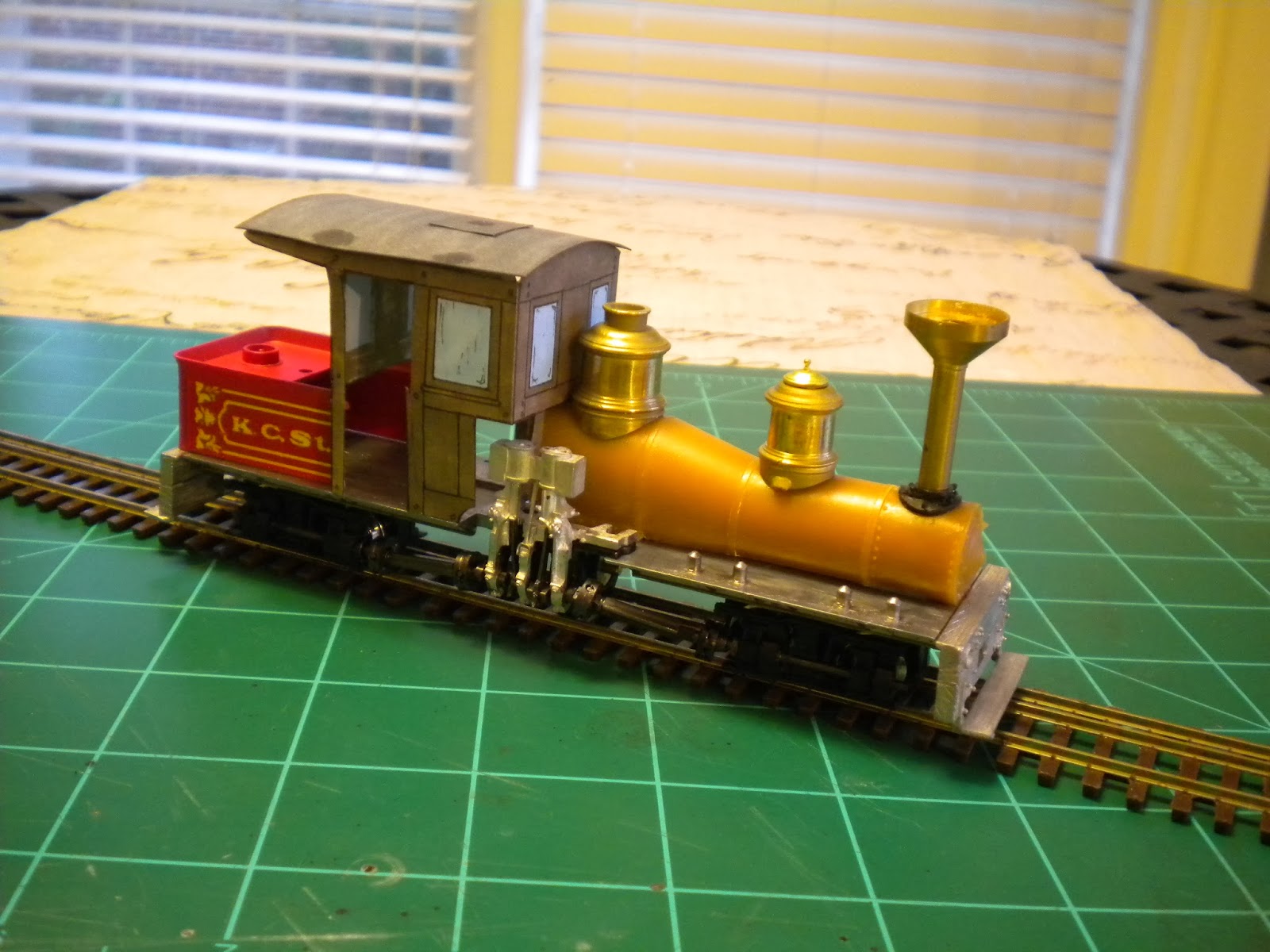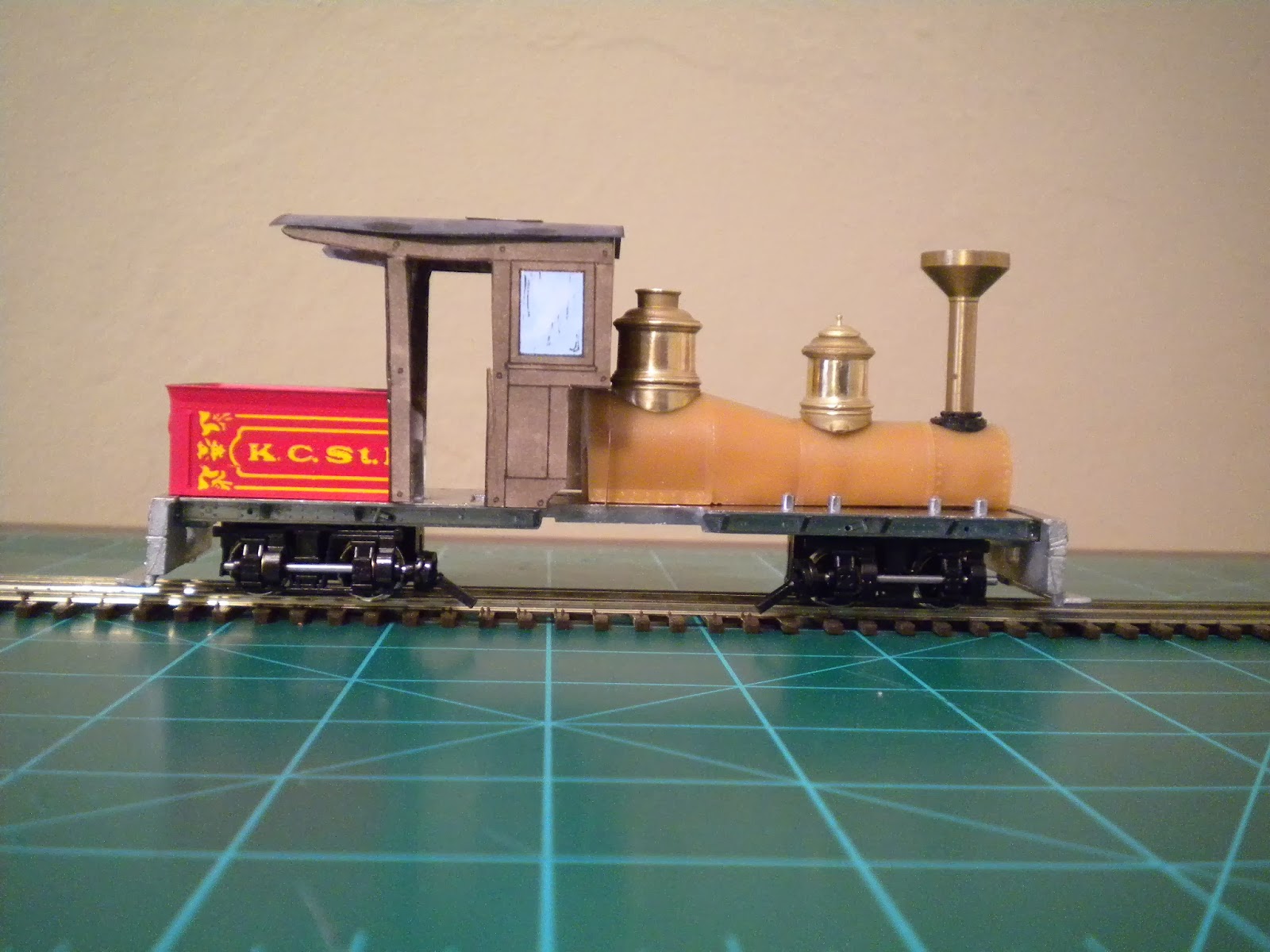Wow, I'd say it's about time to dust off the cob webs and get this shin-dig rolling again!
Sorry that's it's been a while since I've made any major updated here. As I'm sure you all know real life is a higher priority than our little miniature realms of fancy. So between those priorities, distraction, and just plain procrastination... I have FINALLY made some considerable progress on one of my locomotives for the Ocalla Tramway. However, I need to go back a week or two to really get things up to speed.
Once of the things I've had to ponder over is how to mimic the spark arresting stacks of the larger Arizona Copper Company's Porters. (Specifically engines 9 and 10) And although some labor was involved I've come up with a pretty close match. The bottom portion of the stack scavenged from an old Pull Back toy train I had years and years ago. I saved the stack thinking I might use it one day, turned out I was right! The toy was based on a cross between the Central Pacific "Jupiter" and the V&T 4-4-0 to create a generic old time train toy. The top part was made of plastic and was removed which left a lip on the top that was unsightly. The lower portion is made from white metal and so the lip was carefully filed down to match the profile of the stack. The top portion is modified from a Precision Scale Co. Radley Hunter stack casting, cutting and filing off excess material to give the correct profile of the ACC engines. the photo below shows the results of my efforts.
Sorry that's it's been a while since I've made any major updated here. As I'm sure you all know real life is a higher priority than our little miniature realms of fancy. So between those priorities, distraction, and just plain procrastination... I have FINALLY made some considerable progress on one of my locomotives for the Ocalla Tramway. However, I need to go back a week or two to really get things up to speed.
Once of the things I've had to ponder over is how to mimic the spark arresting stacks of the larger Arizona Copper Company's Porters. (Specifically engines 9 and 10) And although some labor was involved I've come up with a pretty close match. The bottom portion of the stack scavenged from an old Pull Back toy train I had years and years ago. I saved the stack thinking I might use it one day, turned out I was right! The toy was based on a cross between the Central Pacific "Jupiter" and the V&T 4-4-0 to create a generic old time train toy. The top part was made of plastic and was removed which left a lip on the top that was unsightly. The lower portion is made from white metal and so the lip was carefully filed down to match the profile of the stack. The top portion is modified from a Precision Scale Co. Radley Hunter stack casting, cutting and filing off excess material to give the correct profile of the ACC engines. the photo below shows the results of my efforts.
Yesterday and part of today I worked on one of the more challenging aspects of making a 20" gauge outside frame Porter, widening the frame of the Grandt Line kit. fortunately the cylinder saddle was a virtual dead on match. And the drawings of ACC engines 9 and 10 in the March 04 edition of the Logging, Mining & Industrial Annual shows the frame spacing also. And I was able to cut out some notches so that the model's frame members fit securely and hold the proper width. Modifying the firebox front to accept the new frame spacing was a little more difficult. But here are some photos of everything loose fit together.

The fitting still needs a bit of refining. A new steel "plantation" style cab and narrowing the cab floor to keep the locomotive to a maximum width of 6 scale feet. Again, mimicking the ACC engines. The dome on the tank is the original steam dome from the Grandt Kit and is being used as the new sand dome, which were rather large for these engines compared to earlier Porter locomotives. But given the sharp curves and steep grades of the original Coronado railroad the engines probably used a lot of sand. I'm not completely happy with the dome and I'm still looking at my options, but if need be I can deal with it. As for the in-cab steam dome it will be built up using some 1/2 brass tubing and a MDC small diamond stack.
Now that I've wet my feet again with this engine I'll either work on it some more or work on the "Spud" again. I also have a stone base water tank in the works. So more is sure to come! Stay tuned!


























